
How to -movies and virality: Male beauty bloggers
Male beauty bloggers are a new social group, that got worldwide fame in recent years. They are a new internet sensation with millions of followers, viral videos and inspiring life stories. How did they become so successful?
Even in today’s so-called “free” world, it is not (yet?) common for men to wear makeup. However, this tendency is slightly changing, especially in popular culture. The internet plays an important role in this change. Working on this article, I observed and analyzed social media pages of beauty bloggers, as well as their comment sections. I used this information to describe and analyze behaviour patterns and to draw conclusions about what I've noticed. How do they do it? What are the unwritten rules of this group? Can we call them media influencers? I will try to find answers to these, and other related questions below.
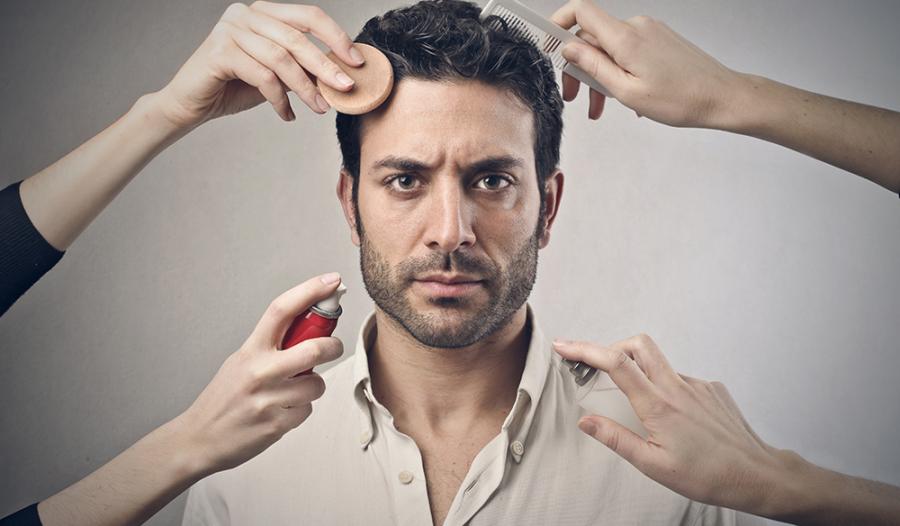
Breaking gender stereotypes
How did Male Beauty Bloggers get so popular?
Male Beauty Bloggers are not a new phenomenon. This type of blogging evolved from female makeup videos on YouTube. Male Beauty Bloggers were not a widespread phenomenon, but a “subculture”, or more correctly a culture niche of the whole beauty blogging sphere - like makeup for goths, professional techniques, “Halloween” makeup, and various other styles. Thus, they can be labeled as “outsiders” in the meaning that Howard Becker attached to the concept: “those people who are judged by others to be deviant and thus to stand outside the circle of “normal” members of the group” (Becker, 1963).
At first, Male Beauty Bloggers were popular and widely supported among the LGBTQ+ community. According to some sources, the group only became popular for a bigger audience around 2014. Before, only a couple of male YouTubers had enough courage to put their tutorials on the internet. Men wearing makeup were mostly associated with drag queens and transgender culture. Male Beauty Bloggers present themselves as independent artists and have stepped away from the shadow of LGBTQ+, a while ago.
On YouTube, the beauty blogging scene belonged to women for years. But now they confidently share it with men. Male Beauty Bloggers became a separate niche in a segment, not dependent on female bloggers, but sometimes cooperating with them. Men applying makeup, creating “new looks” get the same amount of views, sponsored promotion and appreciation of fans, as their female colleagues.
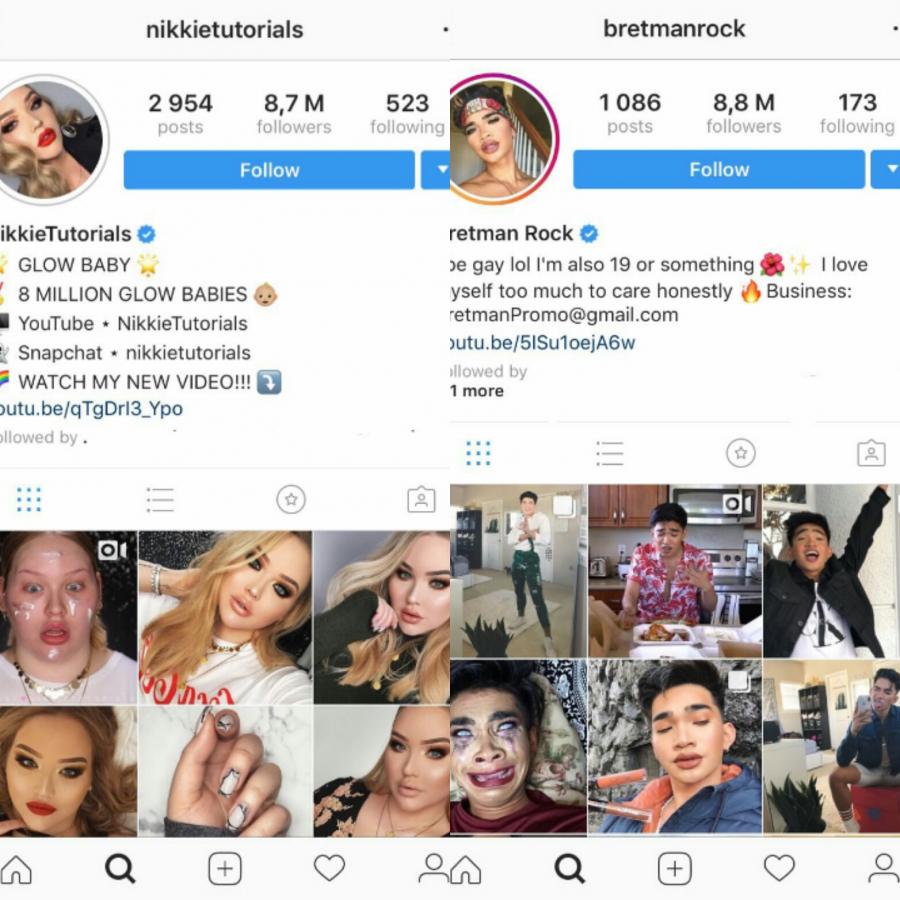
Popular beauty bloggers @nikkietutorials and @bretmanrock have almost the same amount of followers (24.11.2017)
Male Beauty Bloggers, even though they may seem more appealing to male viewers, still attract aa large audience of female makeup lovers. This is a result of them taking into account male features in the look, while still using beauty products. Millions of followers on social media, personal stories of “coming out”, provocative appearances and humor attract unbelievable numbers of views for each video. Male Beauty Blogging is become so popular and commodified that it can become a carreer. It is important to note here that family affairs might affect one’s career significantly.
Even though their popularity is growing, Male Beauty Bloggers are still working in a niche. A niche that is still potentially controversial for outsiders. Parents who are not supportive of the makeup idea can thus have a negative effect “...and, as outsiders, often fail to understand the nature of the [one’s] attachment to his work. The misunderstandings and disagreements that arise often change the direction of a man’s career and, in some cases, bring it to an end.” (Becker, 1963).) The same mechanisms that Howard Becker described in relation to jazz musicians in the 1950's are still operative.
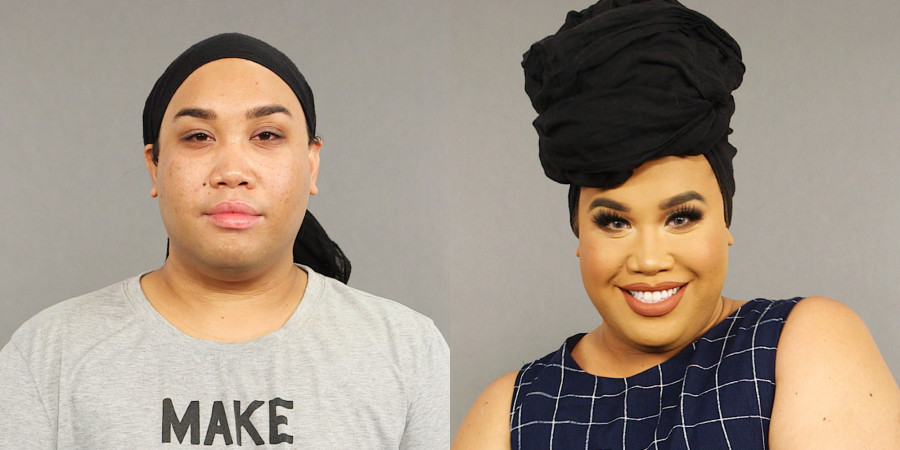
Before and after: Patrick Starr
A superdiverse translocal population
Male Beauty Bloggers are, indeed, a translocal phenomenon. This shift of makeup culture started in the USA and got widespread attention around the world. However, even if it may seem like a “homogeneous globalized subculture” (Maly &Varis, 2015), it is not. The members of the group, even though they are connected to one common concept (idea), differ depending on many factors, as well as features connected to their location. “Thus, we need a polycentric vision… to see culture… as layered and oriented towards a number of centers of normativity” (Maly & Varis, 2015). In this respect, MBB can be seen as a superdiverse population.
For instance, they can differ because they use different types and brands of cosmetics - companies with headquarters in the US are more likely to sponsor American Male Beauty Bloggers; while Asian beauty brands cooperate with local bloggers. (Originally) Asian Male Beauty Bloggers also add some femininity (as we have learned to understand it as such) in their looks by wearing wigs, accessories, or sometimes even dresses and heels. Western male beauty bloggers, mostly prefer "traditional" (in terms of commercialized female beauty), glamorous, “Hollywood celebrity”- looks. These males use makeup to resemble styles, that are actively advocated by companies in advertisements, or by Hollywood's rich and famous (the kind of look Kim Kardashian would go for, for example). On the other hand, Asian Male Beauty Bloggers are more open to experiment with color and textures (e.g.: using lipstick as an eyeshadow), creating something new, extraordinary and (most importantly) viral.
Despite the members mostly getting to know each other online (at least at first), there are some features that every popular beauty blogger should possess. What's really crucial and global, among all successful Male Beauty Bloggers, is their skills, their construction of a "unique identity" (being different from all the other men and women), their sense of common beauty trends (even though experiments are welcomed, they mostly stick to “traditional”, glamorous looks in their public appearances) and personal stories of coming out. Male Beauty Bloggers present makeup as a type of art and self-expression. They are finally “being real” (Maly, Varis, 2015) with society. Male Beauty Bloggers show their true self in YouTube videos, free of bullying or gender stereotypization.
However, this “true self” is a pattern that covers the same features among most Male Beauty Bloggers, which makes it a part of a global identity. Being a “real” Male Beauty Bloggers means to promote acceptance and integration in society and the ability and freedom to express yourself however you want. These bloggers are very proud of belonging to this group; proud “to be who they really are”. However, being your "true self" doesn't exclude following common beauty trends in terms of makeup, fashion and similar Male Beauty Bloggers behavioural patterns. Beauty standards differ in Asia, the Middle East, and the West, and this is accurately reflected in the looks of Male Beauty Bloggers. Thus, as we can see, “...some indexicals have become truly global, yet others work only on more local levels.” (Maly, Varis, 2015).
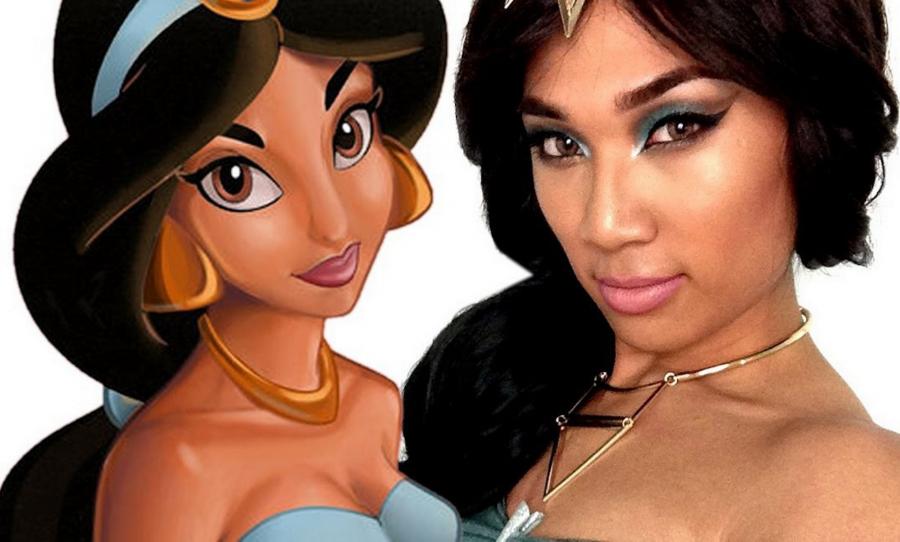
Marc Zapanta (Philippines) transforming himself into Jasmine
Social authority levels within the group
Of crucial importance is the concept of “Deviant Careers” by Howard Becker. One can try a type of behaviour, that increases the deviance, which would mean the start of the career. This process can be characterized as follows: “...the commission of a nonconforming act, an act that breaks some particular set of rules.” (Becker, 1963). The first step would simply be the ordinary application of makeup by men (not excluding the possibility of doing so after watching a tutorial, which can be followed by posting the picture online, and tagging one's favorite beauty blogger). Taking the analogy into account with Becker’s drug users, we can differentiate such person as a “beginner”.
The next level would be the “occasional user”. Here a man would upload videos of himself playing around with makeup online, but he doesn't gain much popularity and has an additional “offline” job in order to pay the bills. Some will “...ultimately take on an extremely deviant identity and way of life.” (Becker, 1963). The later case involves openly uploading makeup videos by men on YouTube and going after the real, profitable career connected to these activities. In the analogy, the last type would be a “regular user”, or in other words, a crusader. I would like to zoom in on this category.
The crusaders of the social group are successful Male Beauty Bloggers. “Success” here is pretty vague, but there are some similar features, which I noticed during my research. Some of them were already mentioned above, such as: skillfulness in applying makeup, following certain beauty standards, openness to experimenting, sense of humor, and personal stories of acceptance of one's "true self". This is a set of must-have features. In order to become a crusader you need to fit this profile at least. It is of crucial importance to be innovative and creative in what you are doing, in order to be noticed by the audience. You need to know how to shock your viewers; to attract constant attention. Tutorials have to be easily applicable and well explained - you have to keep in mind, that your looks are mostly recreated by amateurs.
One becomes a crusader, when he has more than a million followers on YouTube and other social media, when the mainstream press starts talking about the person and he “goes out” of the internet bubble into other mainstreammedia and offline spaces, e.g.: giving interviews, participating in tv shows, making public appearances. Some are featuredon magazine covers and become ambassadors of famous makeup brands.
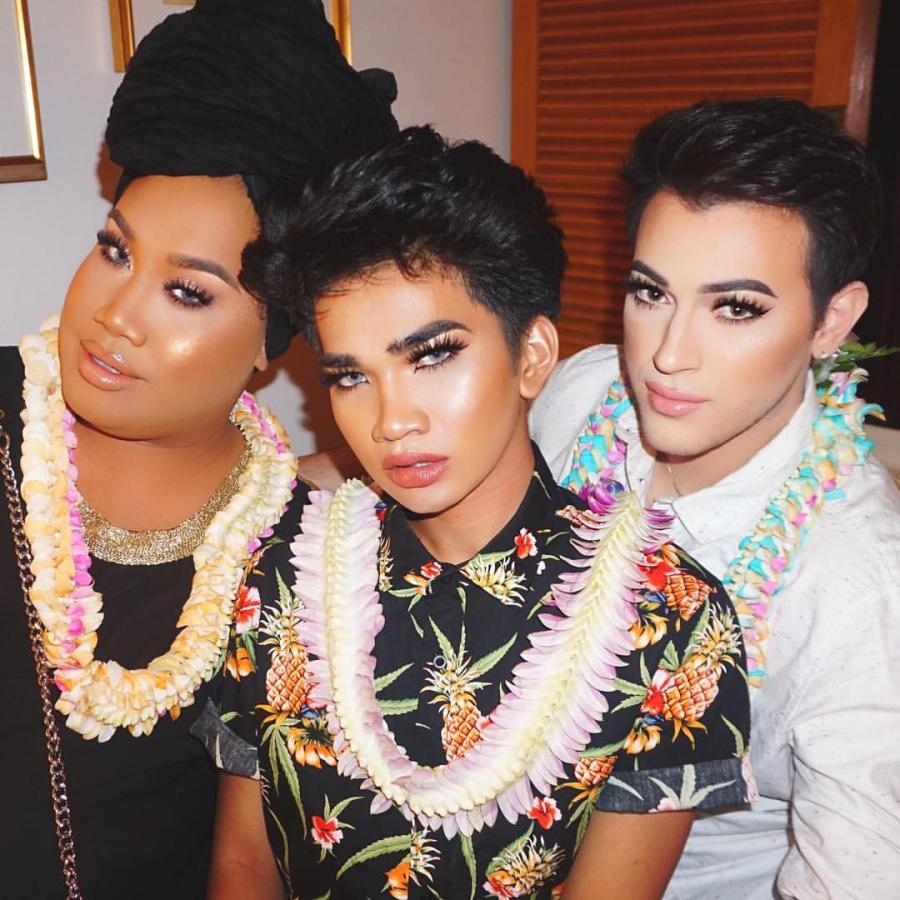
MBB together. From left to right: Patrick Starr, Bretman Rock, Manny Mua
The building of a network with colleagues also plays an important role. Male Beauty Bloggers can achieve a certain level of success only with the help of cooperation and support of others in the group: “Successful functioning and professional mobility are functions of the individual’s relation to a network of informal organizations composed of his colleagues.” (Becker, 1963). MBB star in common videos, promote each other's products and work on new projects together. Thus, according to Becker (1963): “The successful career may be viewed as a series of such steps, each one a sequence of sponsorship, successful performance, and the building up of relationships at each new level.”. Everything I mentioned above, is not necessarily applicable to one person at the same time (except for the number of followers and cooperation), but the more factors are present decides your level of getting closer to being a “successful” member of the group.
While examining the comment section of Male Beauty Bloggers crusaders, I noticed that they have very dedicated and widespread fan bases each. In some cases, this results into a transnational group being formed around a crusader. They also mostly contain youngsters - teenage boys and girls who love makeup. As an example, the reactions to the videos of Bretman Rock are exceptionally flattering. But if we check some of the commenter's profiles, it becomes clear that they want to follow into the footsteps of their beauty idols.
Fans use videos of Male Beauty Bloggers not only for their entertainment, but also as a serious learning guide. Posting videos of tutorials and asking for likes, they want to be just like Bretman Rock, and as popular and stylish as him. A similar tendency is noticeable on another social medium: Instagram. He gets tagged in a number of people’s pictures. They followed the steps of his tutorials and want to share the results. But what makes him so interesting to be followed by millions? Perhaps, we can find an answer after taking a closer look at the rules and norms of the group.
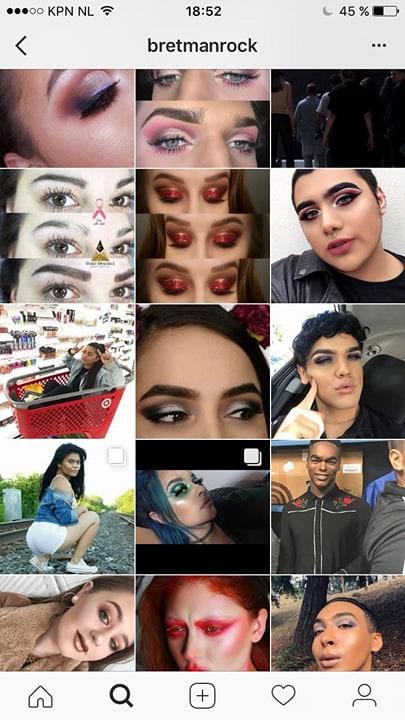
"Tagged in" section of Bretman Rock's Instagram account is full of the pictures of his fans

"Tagged in" section of Bretman Rock's Instagram account is full of the pictures of his fans
Rules and norms
Every social group has its own rules and norms. “Modern societies are not simple organizations in which everyone agrees on what the rules are and how they are to be applied in specific situations. They are, instead, highly differentiated along social class lines, ethic lines, occupational lines, and cultural lines.” (Becker, 1963). Sometimes they are official, sometimes abstract and unwritten, but whatever the case, they are followed by every member.
Some more specific rules are carried out by a number of users in YouTube, especially those who are active in the beauty blogging sphere. In the video one should appear in a smiley, friendly way, already showing the end result of the makeup tutorial. The video always starts with a polite greeting, like “Hey, guys! I haven’t seen you for a while!”. The next step is introducing the type of makeup used in the video: “Today I'm going to show you my autumn makeup routine”. Though there are some typical elements, a “contour/ eyeshadow/ brow- Routine”, a “Beyonce/ Rihanna/ Angelina Jolie makeup transformation”, or a “Smokey Eyes/ highlight/ full coverage tutorial” - is the typical kind of content one would find on Male Beauty Bloggers YouTube channels.
For the actual step-by-step guide they mostly use sponsored beauty brands, discussing them in detail during the process. However, a specific feature here is that the products these bloggers use also have to be budget friendly.They should be affordable and enable viewers to recreate the looks.
The Male Beauty Bloggers, especially when they are building their carreer, not only invest a lot in their online performance; they are constantly interacting with the digital infrastructure they are using. "Constructing identity in dialogue with the Facebook protocols & algorithms makes us ‘micro-celebrities’ in managing our identity in interaction with protocols & algorithms for an imagined audience." (Maly, 2017). They often encourage people to leave comments, and ask them questions, e.g.: “Have you already tried this product? Comment your impressions down below!”, or “This part of the face is always the hardest to me! To you too?”, or sometimes “Would you like me to show you how to put the highlight on, in a separate video?”. This is a well-known trick to encouraging participation and popularizing the video/channel. This is also used at the end of every video, reminding the audience to give the video a thumbs up, to follow the YouTuber on social media and leave comments. The video is then politely ended with a sentence such as: “Thank you for watching this video, I am going to see you really soon, bye!”. This is also very important, as "Micro- celebrity, a self- presentation technique, in which people view themselves as a public persona to be consumed by others, use strategic intimacy to appeal to followers, and regard their audience as fans." (Marwick, A., boyd d., 2011).
Male Beauty Bloggers are managing their performance and are constantly trying to attract new viewers. In doing so, they try to constantly produce new content, mixing it with humor and personal stories. Besides their shared features, MBB are popular because of their willingness to experiment and create extraordinary looks. Bright colors, unusual materials (e.g.: using only lipsticks, or only eyeshadows to create the whole look), or transformations into a celebrity or character aren't unusual. Sometimes, Male Beauty Bloggers use their sense of humor, to make videos more entertaining to watch - they are not afraid to show themselves from their funny (sometimes, silly) side.
A significant part of their career is made up of the videos in which they tell their personal story, of how they suffered to find their true self and the difficulties of coming out, either as males who use makeup, as being non-heterosexual, or both. They often collaborate with each other and, sometimes, even with celebrities.
It is also of crucial importance for Male Beauty Bloggers to put makeup on in the right order: you cannot put mascara on, before you've put on your foundation, for example. Moreover, it is essential that Male Beauty Bloggers actually have good makeup skills. How else would they make themselves interesting to listen to for such a large audience?
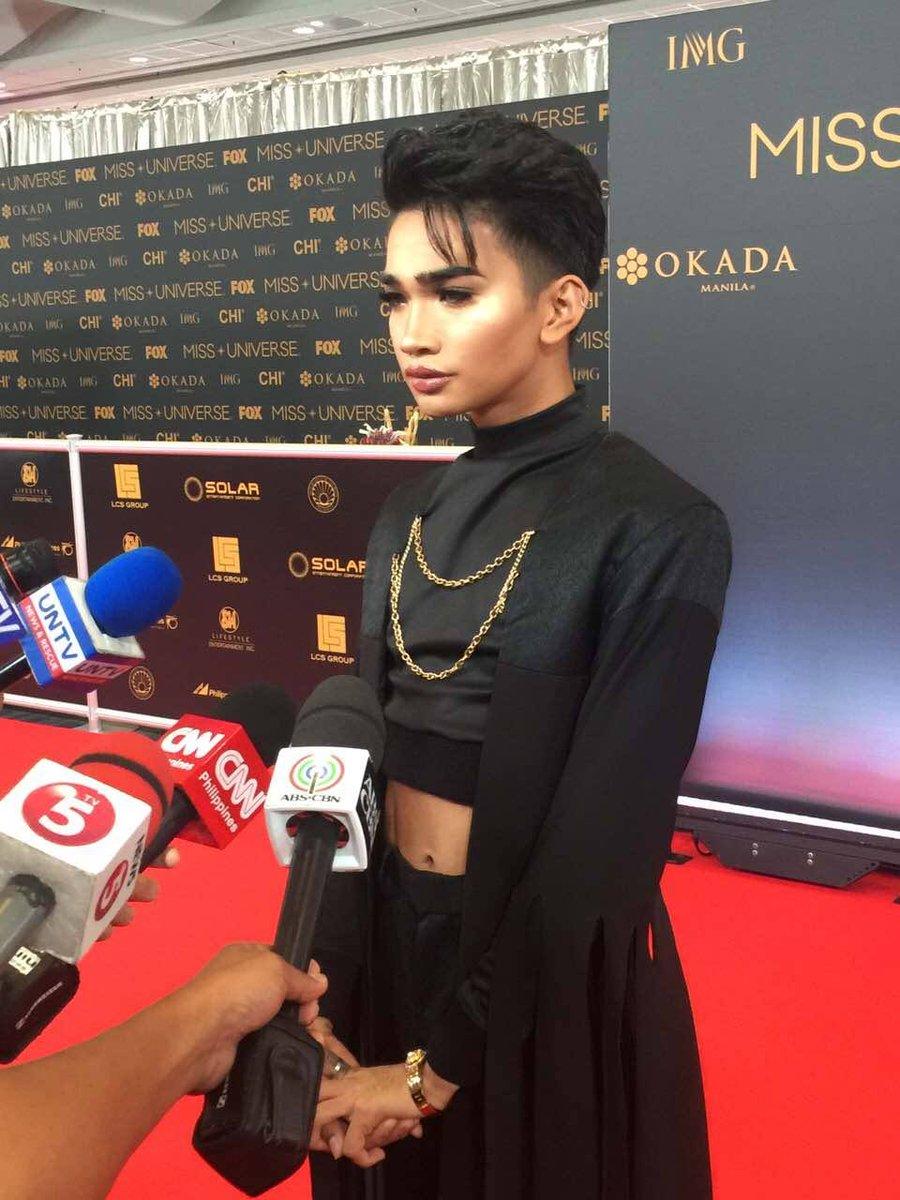
Bretman Rock at Miss Universe 2015 Red Carpet
Male Beauty Bloggers are also active outside the web. Once in a while popular Male Beauty Bloggers get invited to participate in various public events. One type of event is the Beauty Con, where fans can meet their idols. Followers are always willing to meet their idols outside the web - do they look as good as online? Sure thing, in the case of events like these Male Beauty Bloggers have to wear cosmetics and ultra stylish clothes as their images will be spread on Instagram and multiple forums afterwards. Moreover, they have to appear friendly and fun.
The same goes for appearances on television, where they are very welcomed both in the roles of hosts and guests. They often discuss men wearing makeup as a new cultural phenomenon and gender norms related to that. “Everyone should follow the way they really are, not being afraid of criticism and misunderstanding” and “acceptance of your true self” are typical discourses to be found in such discussions.
Appearing on the red carpet is also not a rare occasion: fashion shows, music awards, or even beauty contests - all are ready to welcome internet sensations. Famous makeup brands like Nyx, CoverGirl, Maybelline, etc. are willing to sign contracts with various MBB. However, MBB often become entrepreneurs themselves, creating their own beauty products and promoting them to their fans later on. They achieve a great amount of support from their dedicated followers, whatever they do.
Enough is enough
The online and offline management of a Male Beauty Bloggers's identity is of crucial importance. “Enoughness” is one of the key aspects to mention here. To be a member of this group, it is important to manage the details of one's appearance. “One has to “have” enough of the emblematic features in order to be ratified as an authentic member of an identity category.” (Blommaert &Varis, 2015). An interesting fact about these features, is that they “...however, need to be taken seriously because they are never organized as random: they appear in specific arrangements and configurations” (Blommaert & Varis, 2015).
The following features can both be noticed concerning Rules and Norms and "Enoughness". Male Beauty Bloggers can make videos of their “coming out”, but cannot mention it too often. Male beauty bloggers should not transform themselves with the help of feminine clothes and wigs in every video - male features should instead be used and celebrated. Experimenting is good, but one’s account won't be taken seriously if it only contains extraordinary videos of the misuse of products, applying extra bright colors, etc. The same goes for the complete opposite: if one doesn’t experiment at all, or doesn’t shock the audience, they cannot be recognized as a trendsetter, or an innovator in the beauty world. Most videos should be appealing to an everyday style (that is mostly used by followers). One should present makeup as art, or as a tool of self-expression; not as a way to make money, or as propaganda of beauty products for men. Male Beauty Bloggers have to be tolerant to others, and set an example for their viewers.
“Obviously, these processes involve conflict and contestation, especially revolving around “enoughness” (s/he in not enough of X; or too much of X) as well as about the particular configuration of emblematic features (“in order to be X, you need to have 1, 2, 3, 4 and 5 “versus” you can’t be X without having 6,7,8,9”).” (Blommaert & Varis, 2015). Thus, one cannot make a significant overlap among above mentioned features, as well as work without them at all. At the same time, if “wanna-be” MBB, don’t have at least one of these features - theycannot achieve a level of “success” in the group. However, “enoughness” is indeed a tricky concept of sensing - “And given this essentially contested character, these processes are highly dynamic: configurations of features and criteria of enoughness can be adjusted, reinvented, amended.” (Blommaert, Varis, 2015).
MMB as part of the gender revolution?
As I have already mentioned, famous male makeup personalities have a tendency to appear outside of social media. We can see them on various other media as well - newspapers, magazines (and their covers), they get invited to participate on and to host tv shows, and they're even on the radio. Their online popularity grows daily. The amount followers they have is a telltale sign in that respect.
Meanwhile, critics participate in ongoing discussions about the recent popularization of “males wearing makeup trend”, with two dominant points of view. The first is that it's a marketing trick of huge makeup brands to popularize cosmetics among men and gain twice the profit. While the second line of thought argues that this is a unique cultural phenomenon othat makes gender borders less visible and stereotyped. The Male Beauty Bloggers themselves always encourage the latter point of view, ignoring the first one. They are most likely to present their group as gender ambassadors, rather than as tools of a marketing machinery.
The influence of the Male Beauty Bloggers culture grows and develops daily. Members of this group can, indeed, be seen as media influencers. They set new trends in makeup, promote self- and societal acceptance of people who differ from the 'norm' and encourage others to follow their tutorials. As we can see, they are evolving into something bigger and more meaningful, growing up outside the web. The times where Male Beauty Bloggers were only about posting makeup tutorials weekly, are left in the past.
References:
Becker, H. (1963). Outsiders. Free Press of Glencoe. The University of Michigan.
Blommaert, J., Varis, P. (2015). Enoughness, accent and light communities: Essays on contemporary identities. Tilburg University: Tilburg Papers in Culture Studies.
Maly I., (2017). Identity and social groups. [PowerPoint Slides].
Maly I., Varis P. (2015). The 21st-century hipster: On micro-populations in times of superdiversity. European Journal of Culture Studies.
Mawrick A., boyd d., (2011). I tweet honestly, I tweet passionately: Twitter users, context collapse, and the imagined audience.